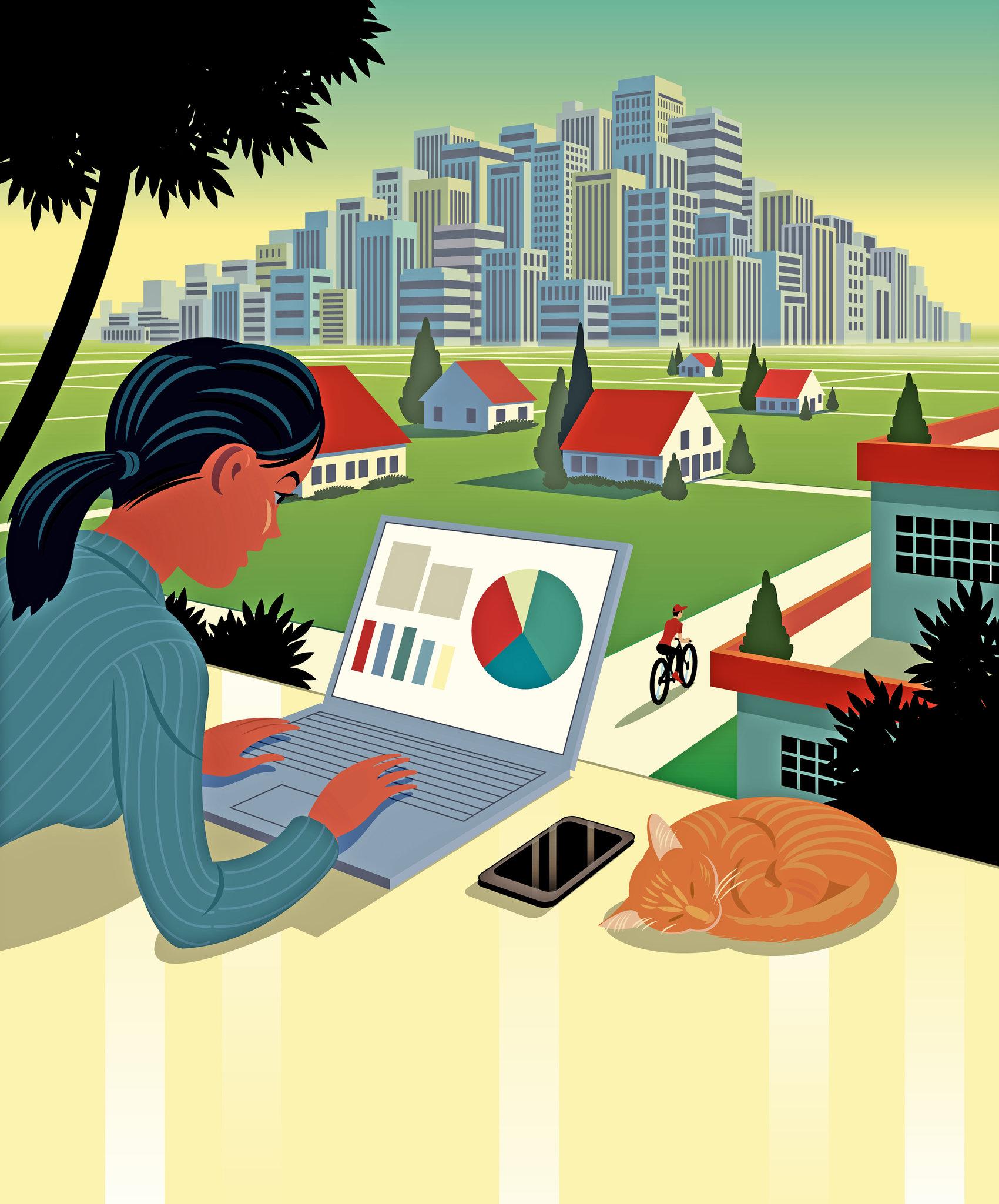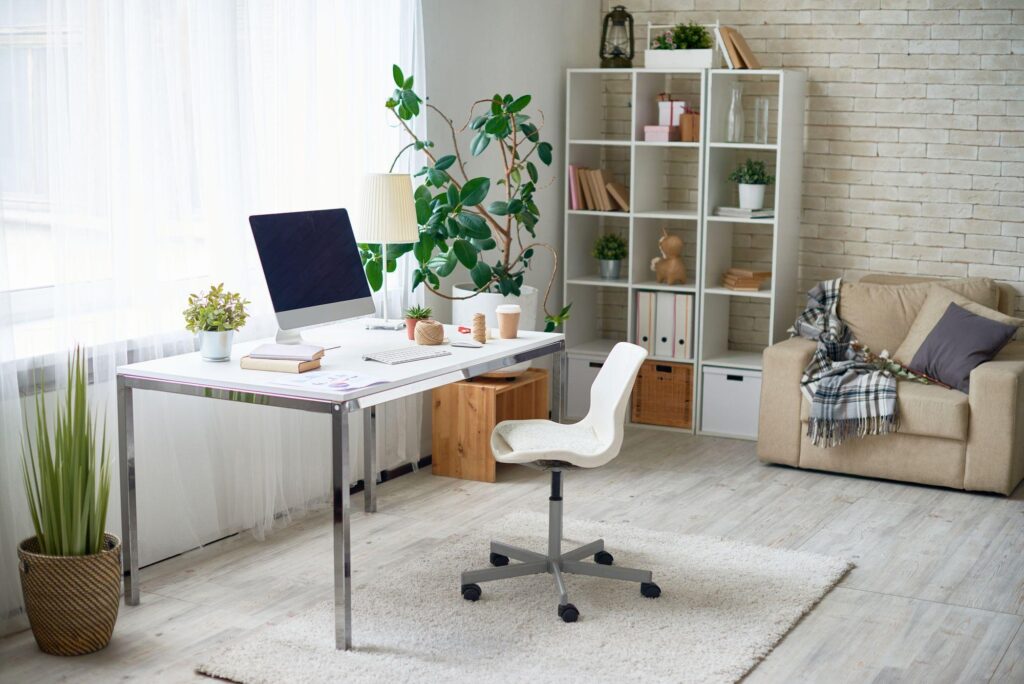In the wake of a global shift that has transformed how and where we work, the real estate landscape is undergoing a profound metamorphosis. Remote work, once a niche perk, has become a defining feature of modern employment, dissolving traditional boundaries between office and home. As kitchen tables turn into conference rooms and neighborhoods into new business hubs, the ripple effects on real estate are both subtle and seismic. This article explores how the persistent rise of remote work continues to reshape the way we buy, sell, and inhabit spaces-challenging long-held assumptions and opening doors to fresh possibilities in an ever-evolving market.
Table of Contents
- The Evolution of Residential Preferences in a Remote Work Era
- Transforming Commercial Real Estate Strategies for a Distributed Workforce
- Adapting Urban Planning to Support Remote Work Lifestyles
- Incorporating Technology and Flexibility into Real Estate Development
- Practical Recommendations for Investors Navigating the Remote Work Shift
- Frequently Asked Questions
- Key Takeaways
The Evolution of Residential Preferences in a Remote Work Era
As the boundaries between home and office blur, the criteria that define the ideal living space have undergone a profound transformation. No longer is proximity to a central business district the paramount concern; instead, buyers and renters seek environments that nurture productivity, comfort, and a balanced lifestyle. This shift has triggered a migration from cramped urban apartments to more spacious, flexible homes that accommodate dedicated workspaces.
Among the most notable trends is the rising demand for multi-functional rooms. Spaces that once served singular purposes, such as guest bedrooms or formal dining rooms, are now being repurposed into home offices or creative studios. Real estate developers and agents have adapted by highlighting properties with adaptable layouts and enhanced connectivity features, such as high-speed internet infrastructure and quiet zones insulated from household distractions.
Another emerging preference lies in the integration of nature and wellness into residential design. Buyers are gravitating towards properties with:
- Private outdoor spaces like gardens or balconies
- Access to walking trails or parks
- Natural light optimization through large windows or skylights
- Enhanced air quality systems
These elements contribute not only to physical health but also to mental well-being, recognizing the holistic needs of remote workers.
| Feature | Pre-Remote Work Demand | Current Demand |
|---|---|---|
| Home Office Space | 12% | 68% |
| Outdoor Living Area | 30% | 55% |
| Proximity to City Center | 72% | 40% |
| High-Speed Internet | 35% | 85% |
Transforming Commercial Real Estate Strategies for a Distributed Workforce
As businesses embrace the flexibility of a distributed workforce, traditional approaches to commercial real estate are undergoing a profound transformation. Companies are no longer bound by the need for expansive, centralized offices. Instead, they are opting for agile, adaptive spaces that cater to a blend of in-person collaboration and remote productivity. This paradigm shift encourages organizations to rethink how they allocate space, prioritize location, and invest in property assets.
Key trends reshaping real estate strategies include:
- Adoption of hybrid office models that balance remote work with occasional on-site presence.
- Increased demand for flexible lease terms and coworking spaces to accommodate fluctuating team sizes.
- Emphasis on wellness-centric designs, integrating natural light, ventilation, and communal areas to foster employee well-being.
- Utilization of smart technologies to optimize space usage and monitor occupancy in real time.
Moreover, real estate portfolios are increasingly diversified to reflect distributed teams. Many organizations are investing in smaller satellite offices near residential hubs, reducing commute times and enhancing employee satisfaction. This decentralization not only cuts costs but also supports local economies and promotes sustainability by lowering carbon footprints.
| Strategy | Benefit | Example |
|---|---|---|
| Flexible Leasing | Adapt to changing team sizes | Short-term coworking agreements |
| Satellite Offices | Reduce commute and enhance local presence | Neighborhood hubs |
| Smart Space Management | Maximize utilization and efficiency | IoT sensors for occupancy |

Adapting Urban Planning to Support Remote Work Lifestyles
City planners and developers are increasingly reimagining urban landscapes to cater to the evolving dynamics of remote work. Traditional office-centric districts are giving way to mixed-use neighborhoods where residential, recreational, and work-friendly spaces coexist seamlessly. This shift encourages a more balanced lifestyle, reducing the need for long commutes and fostering community engagement within walking distance.
Key urban planning strategies include:
- Designing versatile co-working hubs embedded in residential zones
- Expanding green spaces and outdoor work areas equipped with Wi-Fi connectivity
- Enhancing public transportation links that support flexible schedules
- Incorporating smart infrastructure that adapts to fluctuating occupancy
Moreover, the integration of technology into urban planning has become paramount. Smart city solutions that monitor air quality, noise levels, and energy consumption are being leveraged to create healthier and more productive environments for remote workers. These innovations not only promote well-being but also contribute to sustainable development goals by optimizing resource use.
| Urban Feature | Benefit for Remote Workers | Example Implementation |
|---|---|---|
| Co-working Cafés | Flexible workspace with social interaction | Pop-up work pods in parks |
| Green Walkways | Stress reduction and outdoor meetings | Wi-Fi enabled botanical trails |
| Smart Lighting | Energy-efficient, adaptable work hours | Sensors adjusting brightness in communal areas |

Incorporating Technology and Flexibility into Real Estate Development
As the boundaries between home and office blur, real estate development is undergoing a transformation driven by technology and the demand for flexibility. Developers now prioritize smart infrastructure that integrates IoT devices, high-speed connectivity, and adaptive layouts, allowing spaces to seamlessly shift between residential, commercial, and hybrid uses. This shift enables occupants to customize environments in real-time, enhancing productivity and comfort.
Flexible floor plans are no longer an afterthought but a necessity. Modular walls, convertible rooms, and multi-functional furniture empower residents and businesses alike to tailor spaces to evolving needs. This adaptability not only maximizes utility but also future-proofs investments against market fluctuations driven by remote work trends.
- Smart home technology: voice-activated controls, automated lighting, and climate systems
- Co-working hubs: integrated within residential complexes for convenience and community
- Eco-friendly features: solar panels, energy-efficient appliances, and green roofs
| Technology | Benefit | Example |
|---|---|---|
| IoT Sensors | Optimize energy use | Smart thermostats |
| Modular Walls | Reconfigure spaces | Sliding partitions |
| High-Speed Wi-Fi | Supports remote work | Fiber optic connectivity |

Practical Recommendations for Investors Navigating the Remote Work Shift
Investors looking to capitalize on the ongoing remote work evolution should prioritize flexibility in their real estate portfolios. Properties that offer versatile spaces-such as adaptable floor plans or multi-use rooms-are becoming increasingly valuable. These spaces cater not only to traditional living but also to home offices, gyms, or creative studios, aligning perfectly with the diverse needs of remote workers.
Diversification across geographies is another critical strategy. Remote work has diminished the premium once placed on city-center locations, making suburban and even rural properties attractive. Investors should consider expanding beyond metropolitan hubs to capture growth in emerging markets where affordability and quality of life draw remote professionals.
- Prioritize properties with strong internet infrastructure
- Focus on communities with robust amenities and walkability
- Evaluate properties offering co-working or communal spaces
| Property Feature | Investor Benefit | Remote Work Impact |
|---|---|---|
| High-Speed Internet | Attracts tech-savvy tenants | Essential for productivity |
| Flexible Layouts | Higher occupancy rates | Supports home office setups |
| Proximity to Nature | Increased property value | Improves work-life balance |
Frequently Asked Questions
Q&A: How Remote Work Continues to Reshape Real Estate
Q1: How has the rise of remote work changed the demand for commercial real estate?
A1: Remote work has significantly reduced the need for traditional office spaces as many companies adopt hybrid or fully remote models. This shift has led to decreased demand for large corporate offices, prompting landlords and developers to rethink how commercial spaces are designed and utilized. Some offices are being converted into flexible coworking hubs or repurposed for residential or mixed-use developments.
Q2: What impact does remote work have on residential real estate markets?
A2: With fewer people tethered to city-center offices, there has been a noticeable migration toward suburban and rural areas where homes often offer more space and better work-from-home amenities. This trend has driven up demand-and prices-in these regions, while prompting urban areas to reconsider housing affordability and lifestyle offerings to retain residents.
Q3: Are there new features homebuyers are looking for in a remote-work era?
A3: Absolutely. Homebuyers increasingly prioritize dedicated office spaces, high-speed internet connectivity, soundproof rooms, and flexible layouts that can accommodate work and family life simultaneously. Outdoor spaces and proximity to recreational areas have also gained importance as people seek balance between productivity and well-being.
Q4: How are real estate developers adapting to the remote work trend?
A4: Developers are innovating by creating mixed-use communities that blend residential, commercial, and leisure spaces to cater to new lifestyle needs. They’re focusing on flexible floor plans, tech-integrated homes, and amenities that support both remote work and social interaction, such as communal work lounges and wellness centers.
Q5: What challenges does remote work pose for urban real estate?
A5: Urban real estate faces the challenge of vacancy rates rising in traditional office districts, which can lead to economic ripple effects in local businesses reliant on office workers. Cities must also address how to maintain vibrant downtown areas and adapt zoning laws to allow for more residential or flexible-use properties in business-heavy zones.
Q6: Could remote work reverse the trend of urbanization?
A6: While remote work has slowed some aspects of urbanization, it’s unlikely to reverse the trend entirely. Cities still offer cultural, social, and economic opportunities that attract many people. Instead, remote work is reshaping what urban living looks like, encouraging more diverse, adaptable, and hybrid models of work and residence.
Q7: What does the future hold for real estate in a predominantly remote work world?
A7: The future of real estate will likely be characterized by greater flexibility, with spaces designed to accommodate shifting work patterns and lifestyles. Both commercial and residential real estate will evolve to support a blend of remote and in-person interaction, emphasizing technology, community, and adaptability as core elements of property value.
Key Takeaways
As the lines between home and office blur, the ripple effects of remote work continue to reshape the real estate landscape in profound and unpredictable ways. From sprawling suburban neighborhoods to reimagined urban cores, the demand for space, flexibility, and connectivity is rewriting the rules of where-and how-we live and work. While the full extent of this transformation is still unfolding, one thing remains clear: real estate will never look the same again. In this evolving story, adaptability will be the key currency, and those who can anticipate the shifting tides will find new opportunities in the spaces we call home.

